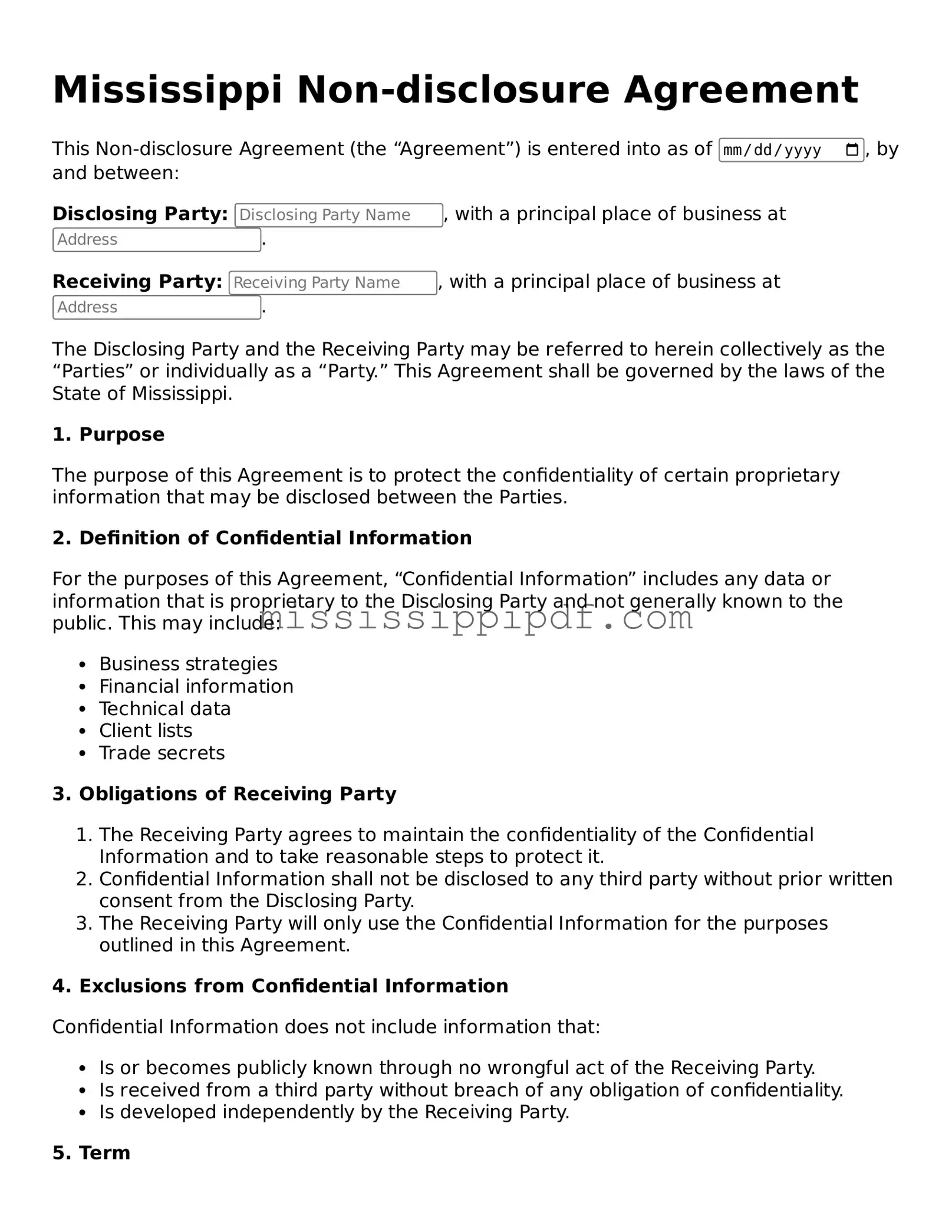Fillable Non-disclosure Agreement Template for Mississippi
The Mississippi Non-disclosure Agreement (NDA) form is a legal document designed to protect confidential information shared between parties. By signing this agreement, individuals and businesses can ensure that sensitive data remains secure and is not disclosed to unauthorized entities. Understanding the nuances of this form is crucial for maintaining trust and safeguarding intellectual property.
Open Document Online
